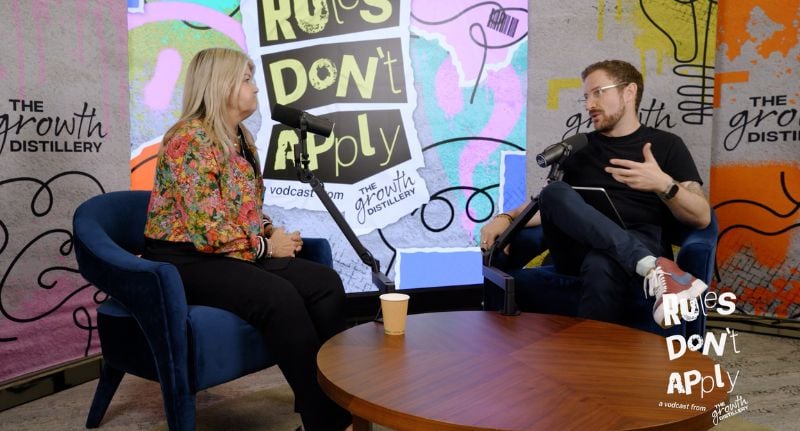At SXSW Sydney, a conversation between Dan Krigstein, director of The Growth Distillery, and Sandy Carter, chief operating officer of Unstoppable Domains, offered one of the clearest snapshots of how fast the AI era is accelerating – and how unprepared most organisations still are.
Carter, a Silicon Valley operator who has steered innovation inside Amazon, Microsoft, MSN and now one of Web3’s most influential identity companies, didn’t mince words. Somewhere between the hype cycles and the endless parade of AI-first ideas, she believes the fundamentals have quietly fallen out of focus.
And that’s exactly where businesses are tripping.
Data, discipline and the delusion that AI is magic
Carter has been working in AI far longer than most.
“I was doing AI back in 2013,” she told Krigstein. “AI has been around for a lot longer than generative AI – the real question is how you make the technology deliver business value.”
For her latest book, AI First, Human Always, she interviewed 434 companies and surveyed 1,500 more. Just 20% were genuinely successful with AI – and those that were had three things in common.
“The first isn’t sexy. It was the data. They were data masters. They understood the quality, the gaps, the lineage. If you don’t know your data, your AI doesn’t stand a chance,” she said.
The second: they used AI to solve a business problem, not as a trophy project.
“They weren’t building a shiny agent and then hunting around for something it could fix. They started with business value first.”
And the third? Change management.
Carter recalled working with a Malaysian company that spent nine months getting the technology right – and two weeks preparing the people. “Of course the project failed. More time was spent training the AI than training the humans.”
On the other side of the ledger, the companies that struggled often believed AI could fix broken processes by sheer force of intelligence. She recounted a CEO desperate for an AI model that could explain why his business was losing deals – despite not recording those losses anywhere.
She continued: “He genuinely thought AI was magic. But if your workflow is broken, AI can’t repair it. You start with your top 20% of healthy processes and level them up – not the squeaky wheels.”

Sandy Carter and Dan Krigstein
When the fear switch flips, innovation dies
Beyond the tech, Carter believes the cultural muscle of innovation is what separates the companies that thrive from those that flounder. And that muscle is fragile.
“The second you get fear in an organisation, your innovation goes by the wayside. You’re not going to innovate if you’re afraid.”
At NTT Data Japan, every employee – not just the engineers – must train in AI and earn “belts” similar to martial arts before they’re allowed to deploy new tools. The result is a workforce that isn’t intimidated by AI, but energised by it.
That kind of inclusivity is critical in a moment where people still quietly wonder if they’re training the robot that will take their job.
But Carter also says leadership has to model vulnerability.
One of her most memorable experiences at Amazon was being asked – as a newly arrived VP – to present a failure to the company’s senior leaders.
“I hated the idea. But five years later, that was the presentation people remembered. Because the culture was: we learn from failure. Otherwise you stagnate.”
The companies that rely on a centralised “founder mode” won’t survive the scale required in the AI era. Those that empower many small teams to innovate will.
The next frontier: trust as the organising principle of the internet
When the conversation turned to the future, Carter didn’t hesitate. In her view, the next major shift won’t be a new model or another app – it will be a reckoning with trust.
“Edelman shows 51% of people trust AI and 49% don’t. We’re at a tipping point,” she warned.
This is where she sees blockchain and Web3 regaining their footing, not as hype vehicles but as infrastructure. Digital provenance, cryptographic watermarking, and verifiable identity could solve the accountability gaps that are currently blowing holes in AI’s credibility.
She recalled the widely circulated deepfake of the Pope in a Balmain puffer jacket – “Ten million likes for a fake image. That was a massive trust buster.”
Blockchain, she argues, could have prevented it.
The rot runs deeper. LinkedIn told her that 30% of users who list a university degree never attended the institution. “Who verifies it? No one,” she said. A decentralised identity system could end that.
But the question that nags her: do companies care enough about trust to absorb the cost?
“We’re moving so fast to win at AI. I don’t know if we’re willing to slow down to build the safeguards.”
And the risks aren’t abstract. She pointed to AI systems recommending self-harm to young users; to data centres consuming the energy of entire cities; to startups creating AI that can “smell” or detect human presence without any clear guardrails.
“Just because we can doesn’t mean we should.”

Leadership in the AI era: build the plane as you fly it… but don’t fly blind
Carter doesn’t believe there’s a universal rulebook for this era. But she does believe leaders need to move – fast.
Speed, transparency and cross-functional collaboration are the new baseline, she argued. “A startup moves fast. It develops in public. It’s not siloed. Everyone pitches in.”
Her hiring philosophy mirrors that momentum. “I hire for attitude first. I can teach skill. I can’t teach work ethic, passion, or care.”
Her advice to executives is equally unsentimental: reward learning, reward curiosity, reward experimentation, and actively reward failure that leads to progress.
“If you punish failure, people freeze. If you celebrate learning, they accelerate.”
Staying ahead when the firehose never stops
Even CEOs are telling Carter they’re overwhelmed by the pace of AI acceleration. Her answer: use AI to manage AI.
She built her own agent to ingest every major AI announcement while she sleeps, summarising it into a morning brief she can digest over coffee. She also leans heavily on CEO roundtables and curated AI lists on X/Twitter.
But her final piece of advice is the simplest: “You can’t think your way into understanding this stuff. You have to play. You have to build. You have to get your hands dirty.”
For her keynote at SXSW, she used more than 100 AI tools. Not because she needed them – but because she refuses to speak about a technology she hasn’t personally wrestled with.
Carter’s message to the industry is as clear as it is sobering: the companies that win the next decade will do three things exceptionally well – master their data, build cultures that embrace change, and protect trust at all costs.
Everything else is noise.
